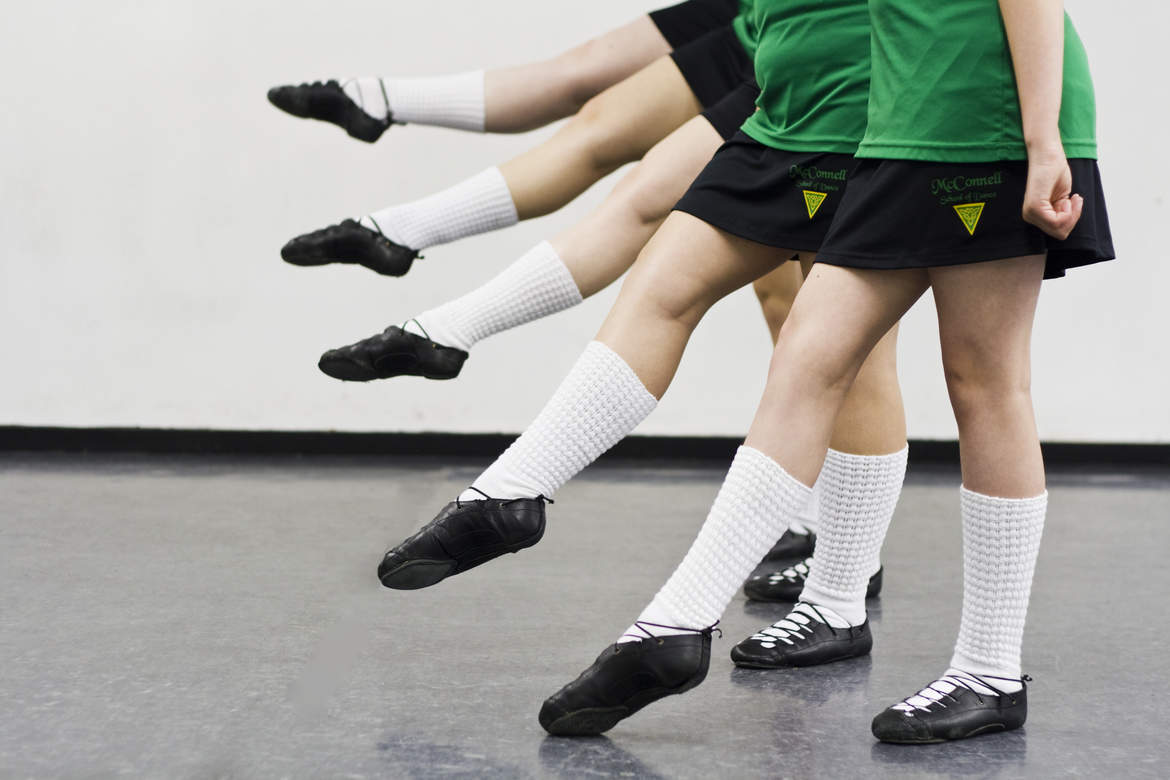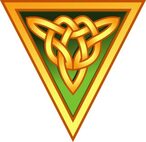


IRISH DANCE PRACTICE
IRISH DANCE PRACTICE
HOME SPACE
Not everyone has a lot space to practise at home, but you'd be surprised how much room you have in a hallway or by moving a coffee table aside. Soft shoe dancing requires a bit more room than Hard Shoe but with very little work, most everyone can turn a corner of their home into a suitable Irish dance practise space.
If you're setting space up in your home for on-line classes here are a few tips;
- It's best to have space where you wont be disturbed by other family members or pets during the lesson. Although it may be tempting for family members to watch, it's best for the dancer to have a private location in the home for on-line lessons. After the lesson is over, we encourage dancers to show their family what they've learned.
- Carpet isn't the most ideal surface to dance on, but it will work if that's all you have. If you have a piece of vinyl floor, shower pan liner (available at hardware stores) or a section of plywood to put over the carpet for hard shoe, it will definitely help for hard shoe practice. Use caution when dancing on concrete as there is no shock absorption and this can lead to injuries if dancers aren't careful.
-
In a dance studio mirrors are use to assist dancers with a visual tool for self correction. At home you may not have access to a wall of mirrors but you'll be surprised at how much difference a common hallway mirror, positioned at the right angle can make.
-
Wear your Irish dance shoes, if possible. If circumstances wont allow you to wear your dance shoes, it's alright to wear trainers, or dance in your socks.



CRN IRISH DANCE VIDEOS
We highly recommend dancers use their time at home to work on new material and learn more dances while on break. CRN Videos are a fabulous learn a new dance on your own as the videos break down the steps and give you a champion Irish dance to practise with at full tempo.
Below are YouTube links to CRN's instructional videos. Please keep in mind these videos are for McConnell School of Dance student's practise purposes only and the videos and dances should not be shared or posted on social media.
- Styles vary from school to school and region to region.
- Dancers are advised to follow their teacher's direction with regards to stylistic differences they may see in the videos. If you have questions, let us know!
- CRN Videos are helpful practise tools to be used in combination with in-class instruction.
IRISH DANCE MUSIC
Irish dance is meant to be done to music so please make sure music is included in every practise session.
Typically, steps are first learned without music and once a dancer is able to execute the step, music should be added. Start with slower tempo music and work up to the temp required for the dance & level you are working with.
Bunghrád
CRN MUSIC TEMPOS & DANCE LENGTH
CRN uses specific tempos for each level and each dance.
Bunghrád tempos are faster because young Irish dancers find it easier to execute the movements at a quicker pace. As the steps increase in difficulty the tempos slow down. Ardghrád & Craobhghrád dancers perform highly skilled moves to extremely slow set dance music where every half beat has double and triple rhythms.
Below is the list of CRN Tempos and Dance Lengths (steps & bars) for dancers practising to their own Irish dance music.

TYPES OF IRISH DANCE & MUSIC INFORMATION
There are several types of Irish music and the associated dances are ;
- Reel - Single Reel or Polka (2/4) Double Reel (4/4)
- Slip Jig (9/8)
- Single Jig (12/8)
- Light Jig (6/8)
- Heavy Jig (6/8)
- Hornpipe (4/4)





IRISH DANCE FOOT POSITIONS
Practicing the basic foot positions are a great exercise for beginner Irish dancers. Below are the Five foot positions used in Irish dance.
- FIRST (idle position) - triangular position with heels together, toes out, and both feet at 45° angle (or more)
- SECOND (at ease position) - right foot in line with left, toes out, heels apart
- THIRD - right heel to left big toe joint
- FOURTH (point position) - right foot to front point position, pointing with big toe and heel pushed forward
- FOURTH A (intermediate position) - right foot to right front corner position to 1 o’clock
- FIFTH - right heel to left toe
- FIFTH A - right toe to left heel (rear)
FOOTWORK FUN FOR YONGER STUDENTS
Developing correct Irish Dance foot work with proper "turn out" takes time, practice, and years of training dancers feet to turn out with every move they make in Irish dance. Basic turn out exercises are part of every Irish dance class whether you're a beginner or champion Irish dancer.
Younger students benefit from visual reminders and a great way to make a fun craft project is to use common interlocking foam mats and paint Irish dance foot positions on the mats for dancers to practice with.
PRACTISE MAT IDEAS
CRN Foot Positions - Paint the various CRN foot positions on the mats and create practice stations where dancers can work on each position to help develop their technique.
Duck Walks - Paint single alternating right and left feet (angled at 45 degrees) on mats and connect in a single line. Eight mats are ideal but any number will work. Create duck walk practice drills with dancers by walking back to the start after each round. Duck walks can be done on flat feet to start and then elevated on toes, without music and then add music and have dancers walk in time to different types of Irish dance music.
Side Step - Paint a right and left foot in FIFTH position (minimum of 45 degrees) on 4 mats and connect in a single line sideways. To create side step practice drills dancers begin on 1st mat and raise up on their toes to jump in position. Next travel sideways with right foot to next mat, one foot at a time (right then left). Have dancers count out the side step moves with "Jump, two, three, four, five, six, seven". Dancers can repeat the drill walking back to the start after each round. Side step can be done on flat feet, then elevated on toes. Use any Irish dance reel or jig for practise music.






